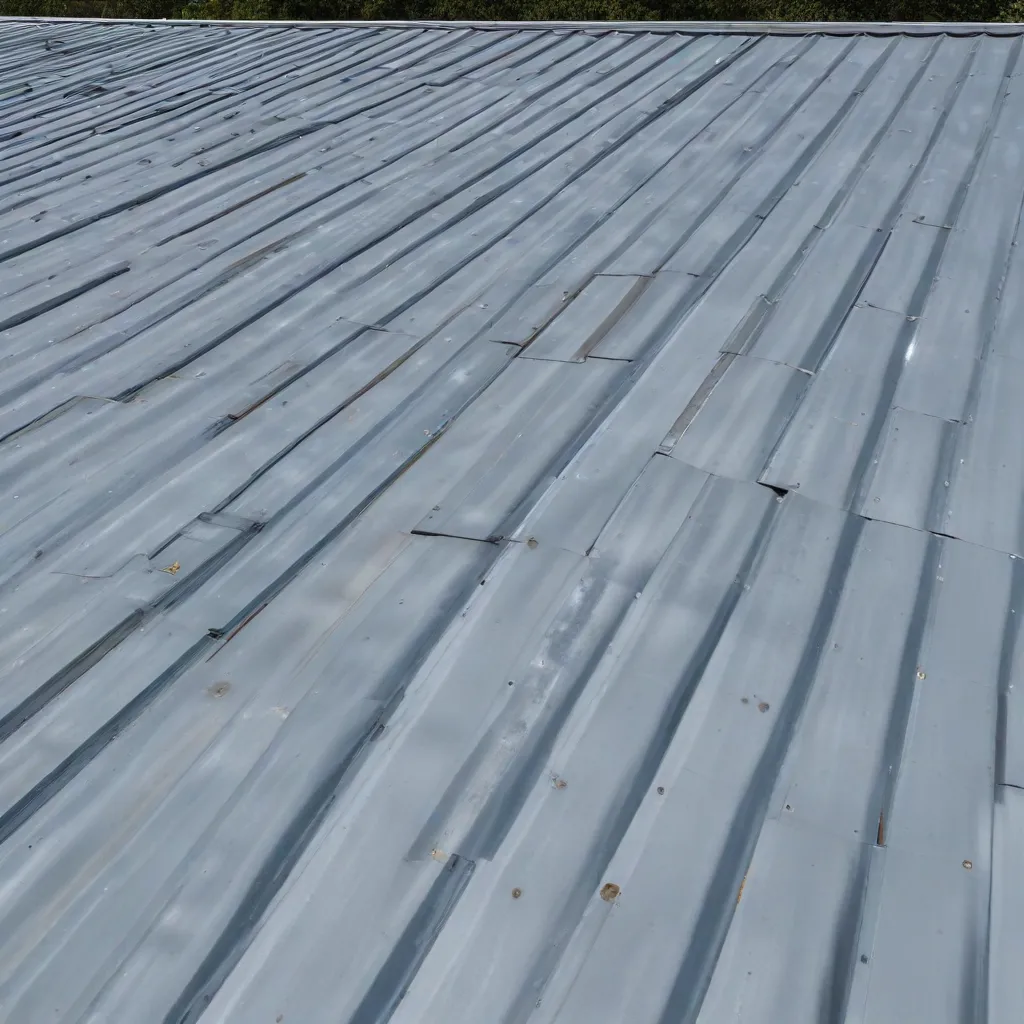
As an experienced roofing specialist, I understand the importance of providing Genuine Roof Systems’ customers with the most up-to-date and informative content on metal roof retrofitting. This process offers a cost-effective solution to enhance energy efficiency and extend the lifespan of existing metal roofs, ultimately delivering long-term benefits for building owners and managers.
Principles of Metal Roof Retrofitting
The primary objectives of metal roof retrofitting are twofold: to improve the structure’s energy efficiency and to prolong the roof’s service life. By implementing a retrofit, building owners can unlock significant energy savings while ensuring their metal roofing system remains durable and well-protected.
Energy Efficiency Considerations: One of the key drivers behind metal roof retrofitting is the potential for substantial energy savings. Metal roofs, while known for their longevity, can become less efficient over time as the original insulation and coatings degrade. A retrofit allows for the installation of upgraded thermal insulation and the application of reflective coatings, which work in tandem to reduce heat transfer into the building. This, in turn, decreases the demand for energy-intensive cooling, leading to lower utility bills and a more sustainable operation.
Structural Integrity Factors: In addition to enhancing energy efficiency, a metal roof retrofit also addresses concerns related to the structural integrity of the existing roof. Over the years, metal roofs can experience wear and tear, potentially leading to leaks, rust, or wind uplift issues. By installing a new roof over the old one, the retrofit process reinforces the structure, providing an additional layer of protection and extending the overall lifespan of the metal roofing system.
Thermal Insulation Strategies
The choice of insulation material and installation techniques are crucial factors in optimizing the energy efficiency of a metal roof retrofit.
Insulation Types and Characteristics: A variety of insulation options are available for metal roof retrofits, including rigid foam boards, fiberglass batts, and spray polyurethane foam. Each type offers its own advantages in terms of R-value (thermal resistance), moisture resistance, and ease of installation. Building owners and roofing specialists must carefully evaluate the specific needs of the project to select the most appropriate insulation solution.
Installation Techniques: The installation of insulation during a metal roof retrofit can be carried out in different ways, depending on the selected material and the existing roof configuration. For example, rigid foam boards may be secured directly to the metal deck using adhesives or mechanical fasteners, while spray polyurethane foam can be applied seamlessly over the entire surface. Proper installation is essential to ensure optimal thermal performance and the prevention of thermal bridging.
Thermal Performance Optimization: Beyond the choice of insulation, the overall thermal performance of the metal roof retrofit can be further enhanced through the use of reflective coatings or radiant barriers. These specialized products help to reduce heat absorption and promote the efficient transfer of heat, ultimately lowering the building’s cooling demands and energy consumption.
Energy Savings Potential
Quantifying the energy savings potential of a metal roof retrofit is crucial for building owners to make informed decisions about the investment.
Quantifying Energy Savings: By utilizing verified energy calculators, roofing specialists can provide accurate projections of the energy savings that can be achieved through a metal roof retrofit. These calculations take into account factors such as the building’s location, climate, roof size, existing insulation, and energy costs to determine the expected reduction in heating and cooling loads.
Impact on Heating and Cooling Loads: The improved thermal performance of a retrofitted metal roof can have a significant impact on the building’s heating and cooling requirements. By minimizing heat transfer, the retrofit can reduce the energy needed for air conditioning during hot summer months and the energy required for heating during colder periods, leading to substantial cost savings.
Lifecycle Cost Analysis: In addition to the immediate energy savings, building owners should also consider the long-term financial benefits of a metal roof retrofit. By factoring in the reduced maintenance costs, extended roof lifespan, and potential increases in property value, the lifecycle cost analysis can demonstrate the true return on investment (ROI) of the retrofit project.
Lifespan Extension Benefits
Extending the lifespan of a metal roofing system is a crucial advantage of the retrofitting process, as it reduces the frequency of costly roof replacements.
Durability and Corrosion Resistance: Metal roofs are inherently durable, but over time, they can become susceptible to corrosion, weathering, and structural degradation. A retrofit introduces a new protective layer that safeguards the existing roof, shielding it from the elements and prolonging its functional lifespan.
Maintenance and Repair Considerations: Compared to a complete roof replacement, a metal roof retrofit often requires less ongoing maintenance and repair. The new roofing system installed during the retrofit process is designed to withstand the rigors of the local climate, reducing the need for frequent inspections and repairs.
Roof Replacement Deferment: By extending the lifespan of the metal roofing system, a retrofit can effectively defer the need for a full roof replacement, potentially by 10 to 20 years or more, depending on the building’s age and the quality of the retrofit. This translates to significant cost savings for building owners, who can avoid the substantial upfront investment of a complete roof replacement.
Ultimately, the decision to pursue a metal roof retrofit should be based on a careful analysis of the building’s specific needs, the potential energy savings, and the long-term benefits of extending the roof’s lifespan. By partnering with experienced roofing specialists like those at Genuine Roof Systems, building owners can unlock the full potential of metal roof retrofitting and enjoy a more energy-efficient, durable, and cost-effective roofing solution.
For more information on Genuine Roof Systems’ comprehensive roofing solutions, visit our website at www.genuineroofsystems.com.

























